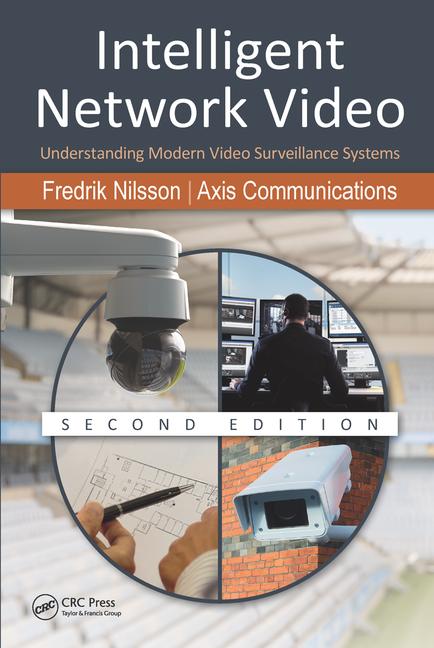Surveillance in Schools Promotes Safety, Understanding


|
|
Surveillance cameras blend in well with the campus architecture at Longview ISD. |
When voters in the Longview Independent School District (ISD) in east Texas approved a $266.8 million bond issue in 2008, it paved the way for construction of seven new elementary schools, three new middle schools and a complete renovation of Longview High School. Recognizing the critical need for a secure environment for students, staff and school visitors, the bond also provided funding for a new, district-wide video surveillance system.
Brian Pitts, the school district’s director of technology, says video surveillance goes beyond security and a sense of well-being, also serving as a tool to help administrators understand any problems at the schools. When a situation arises, the system provides district officials the ability to “turn back the clock” and view video to aid understanding of what really happened.
“There aren’t any dark alleys,” Pitts says. “Everything is open and public and subject to review. The decision was really about the safety of the district’s 8,400 students.”
Choosing a Supplier
Before money became available for the new system, video surveillance at Longview ISD was far from integrated. Several schools had stand-alone systems, including some made from do-it-yourself parts and others using brand-name products. The district’s first introduction to Panasonic was several years ago when Forest Park Middle School installed a similar system to address vandalism.
With passage of the bond, the district wanted to settle on one standardized system as a part of the construction contracts. Because the school district was rebuilding its network infrastructure at the time, the new video installation would also be an IP system to leverage the additional bandwidth.
The highest priority in choosing a video supplier was reliability, and district officials recognized that the Panasonic system at Forest Park Middle School had operated dependably.
“We don’t have to think about it. It just works,” Pitts says. Located about a two-hour drive from Dallas, the district didn’t want to have a lot of service calls and needed a large vendor that could serve the remote area. Finally, the district wanted to integrate video with access control, and in reviewing multiple physical access control vendors, they found that most of them could integrate with Panasonic.
Accessing Video Views
The Longview Independent School District uses about 850 Panasonic i-PRO cameras and the Panasonic i-PRO WJ-ND400 network video recorder. There are six NVRs at the high school, and one each at the middle and elementary schools. Each NVR has 18 terabytes of storage. Each campus has the ability to access its camera views live or from archived footage using web access. The only campus that watches anything live is still under construction, and employees use video to view whether someone is entering into the foyer, which they can’t see because of construction.
The monitoring and management software is used to interface with the NVRs at the high school and from the central office. Pitts appreciates the “no-frills” functionality and reliability of the software.
“The software is extremely straightforward and robust, and the limited clutter makes it easy to find your way around and ensures you can quickly do what you need to do,” he says.
The high school’s director of operations uses the software to view the 300 or so cameras on the high school campus. He also has access to video from all the various campuses and can help other campuses locate footage of a specific incident. ASM software is used at the district office to view the entire system and to obtain archived video as needed. For example, a child recently got hurt in a cafeteria, and her parents had questions about how the event happened. Everything was captured clearly on video, which helped put the parents’ concerns to rest.
The system integrates with DSX Access Systems access control, which was also standardized system-wide. Integration with access control involved defining the nearest camera to each access point to provide video to accompany every access control event.
“When I’m looking at an event in the access control system, I can click on it and say ‘show that to me,’ and it can bring up between one and four cameras watching that spot,” Pitts says. If an access point goes into alarm, the system can pull up footage of the event even hours later. The system also works with non-alarm events, such as answering queries (and showing video) of when a certain user’s card was scanned.
The Cameras of Choice
Pitts says he appreciates that the cameras provide clear views through the glass and can show details of someone entering the building despite backlighting.
“We point our cameras directly at the door, and the dynamic range is very good,” Pitts says. “We use that feature extensively.” The vandal-proof cameras can withstand rough treatment – after all, kids are kids – and can stand up to anything that happens “within the realm of normal” in the school environment, according to Pitts.
For applications requiring pan-tilt-zoom (PTZ) functionality, the school district uses an outdoor network day/night PTZ all-in-one camera. The extended zoom capabilities and image quality of this camera are used to view larger areas. Because no one is viewing the video live, the PTZ cameras are set to move to a series of pre-set positions to provide a sequence of views that can contribute to overall situational awareness. There are six pan-tilt-zoom (PTZ) cameras looking over the high school football field. The cameras are tied into the video production booth for use during live events with video displayed on the stadium’s large screen.
Camera counts range from about 350 (with 30 of them PTZs) at the high school, to about 60 cameras (including 6 PTZs) at the three middle schools and about 50 cameras (including 5 PTZs) at each of the seven elementary schools.
‘Above and Beyond’
Pitts acknowledges Andy Allen and Joe Francis of Timarron Partners, the local Panasonic representatives, for their help during the installation process. He also appreciates that Panasonic has gone “above and beyond” to work with him on the access control integration.
“We are a very hands-on, do-it-yourself shop, but departmentally we are larger than many integrators,” Pitts says. “We maintain the cameras ourselves.”
Throughout the Longview Independent School District, students, staff and school visitors now enjoy newly renovated facilities that demonstrate the value Longview’s residents place on educating their children, as reflected by passage of the bond issue. Security and safety are critical aspects of effective education, and the new district wide video system effectively fulfills the demand for unrivaled performance, reliability and functionality.
This article was originally published as "Surveillance Promotes Safety and Understanding" in the printed magazine.
Looking for a reprint of this article?
From high-res PDFs to custom plaques, order your copy today!








